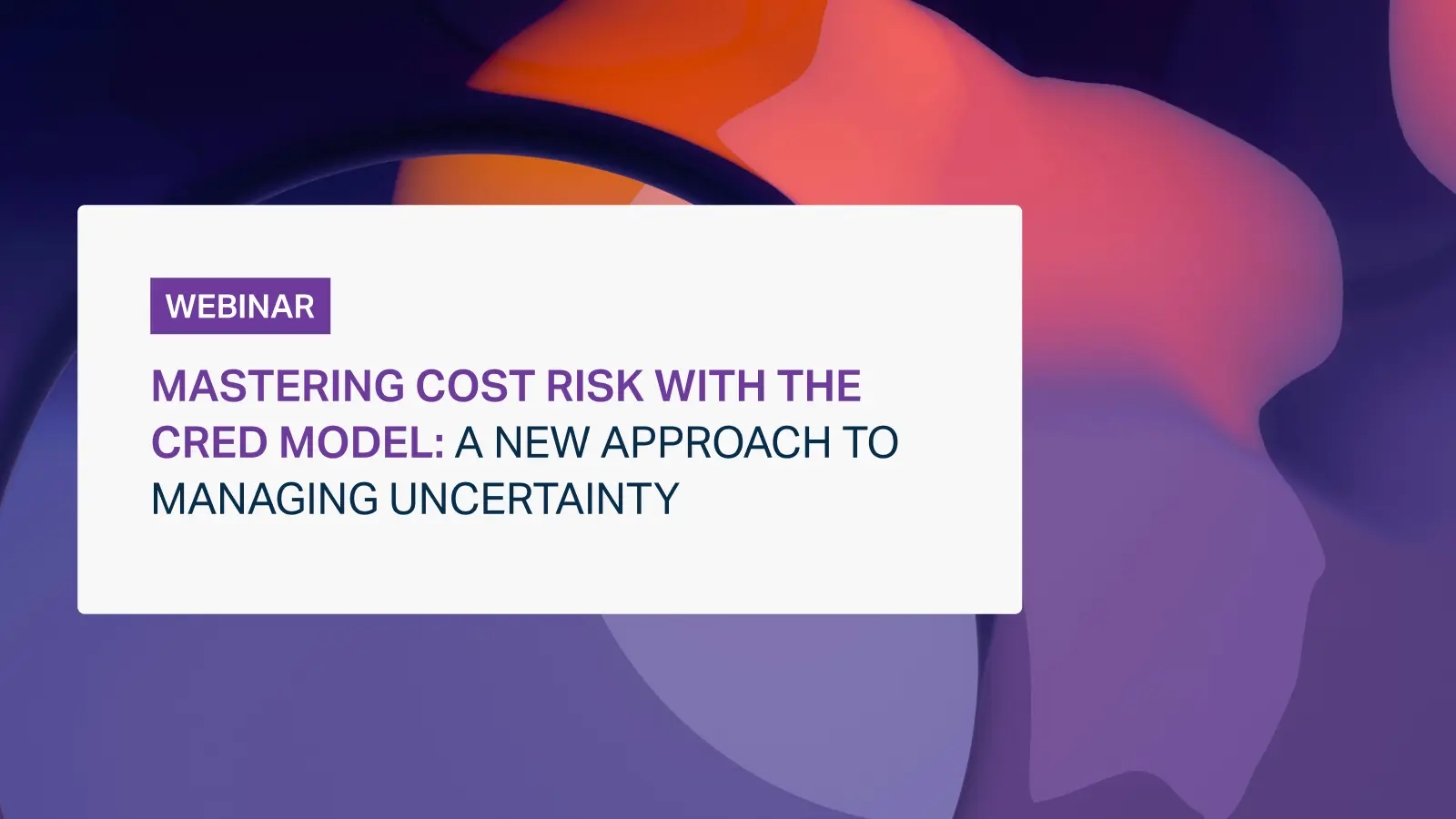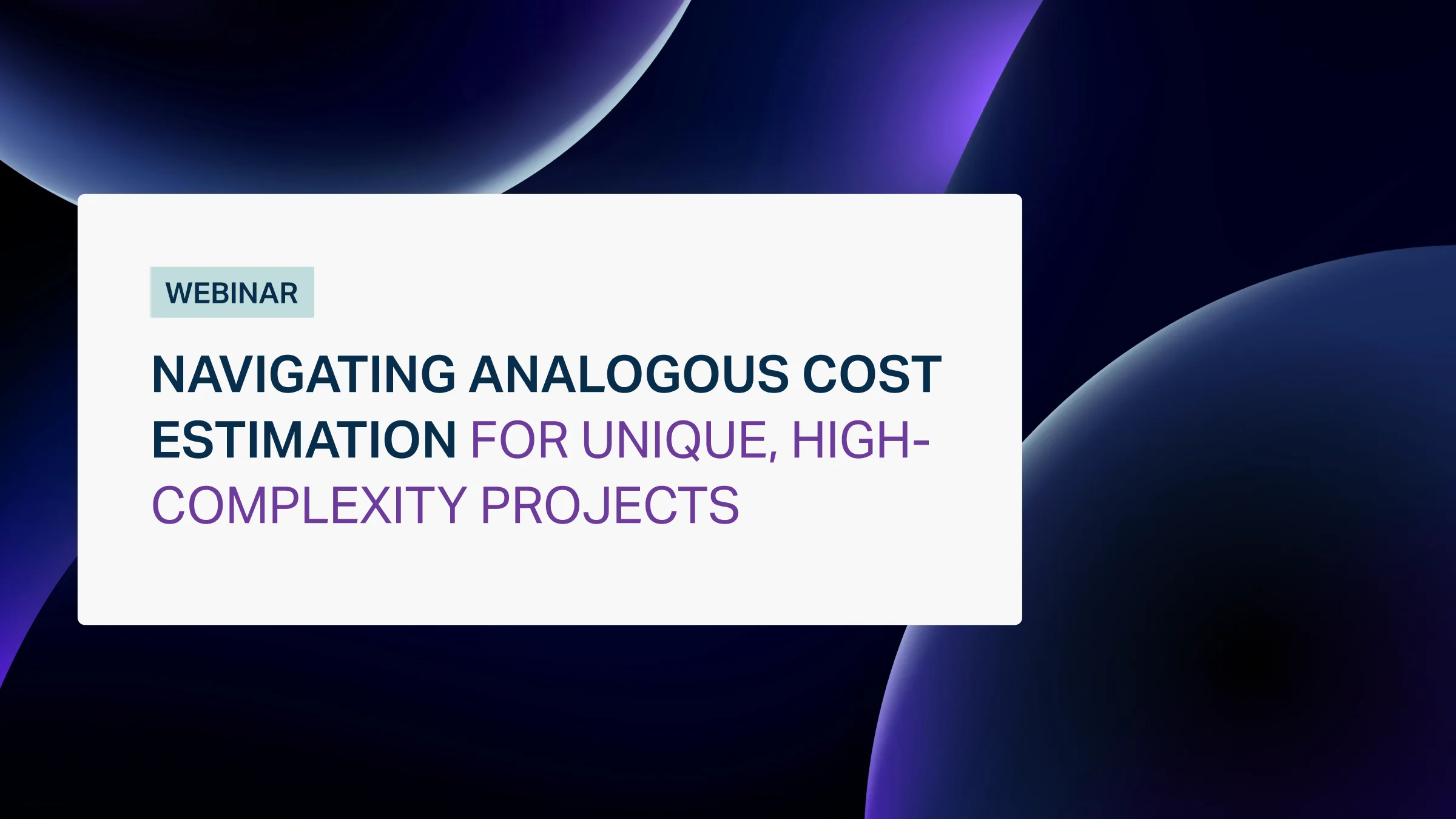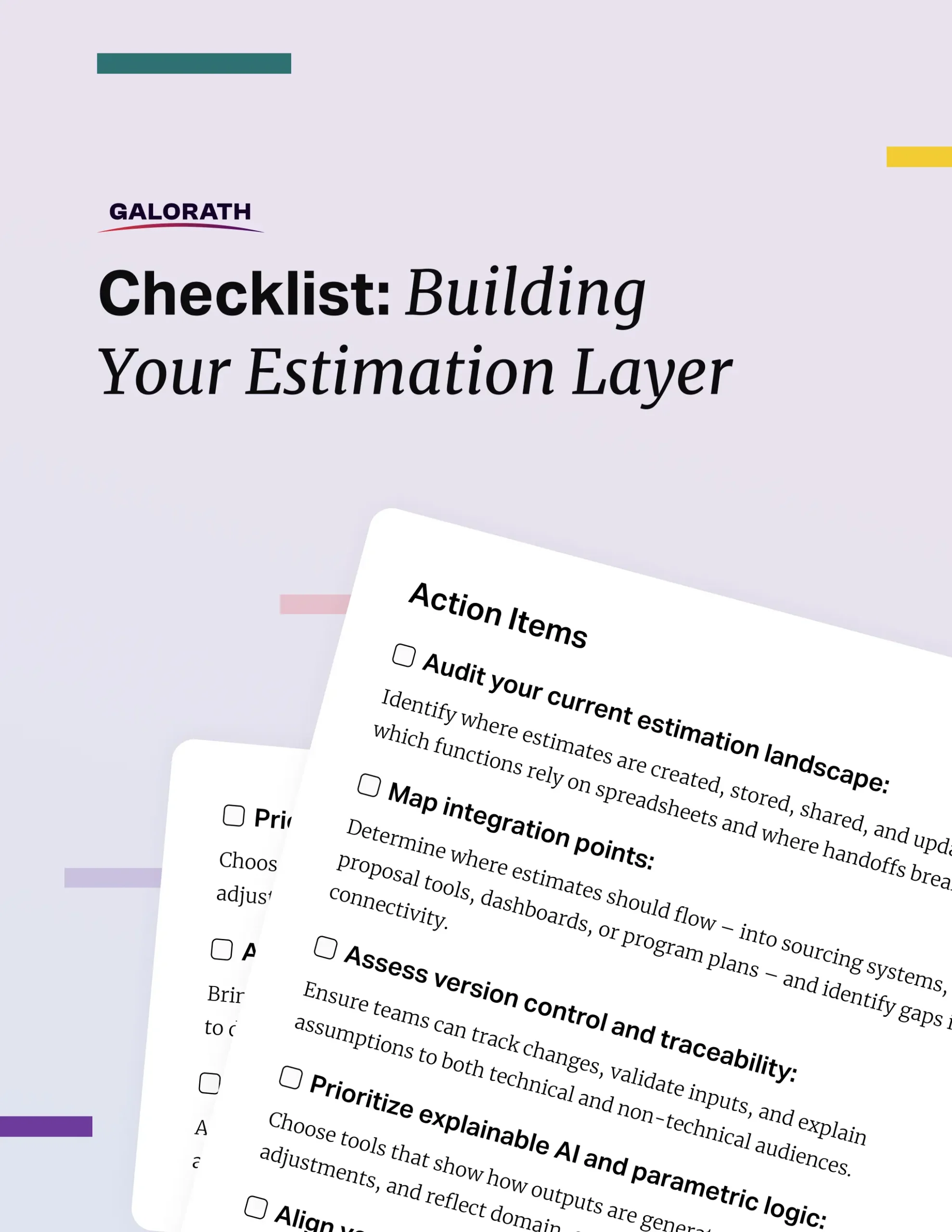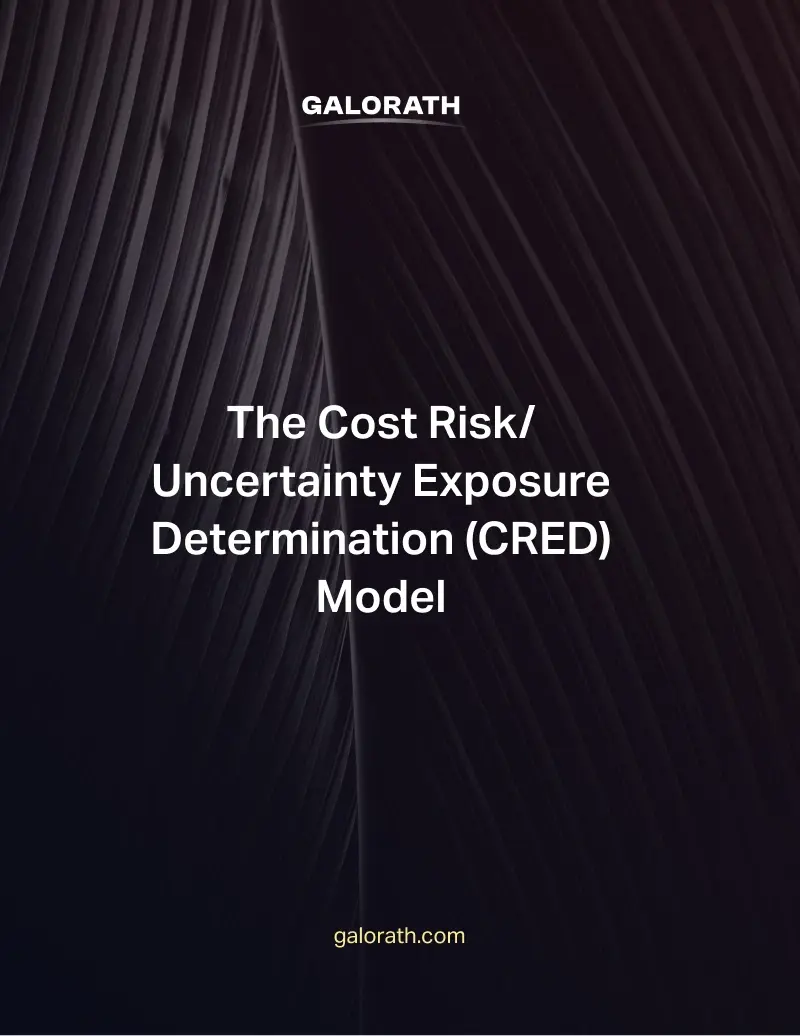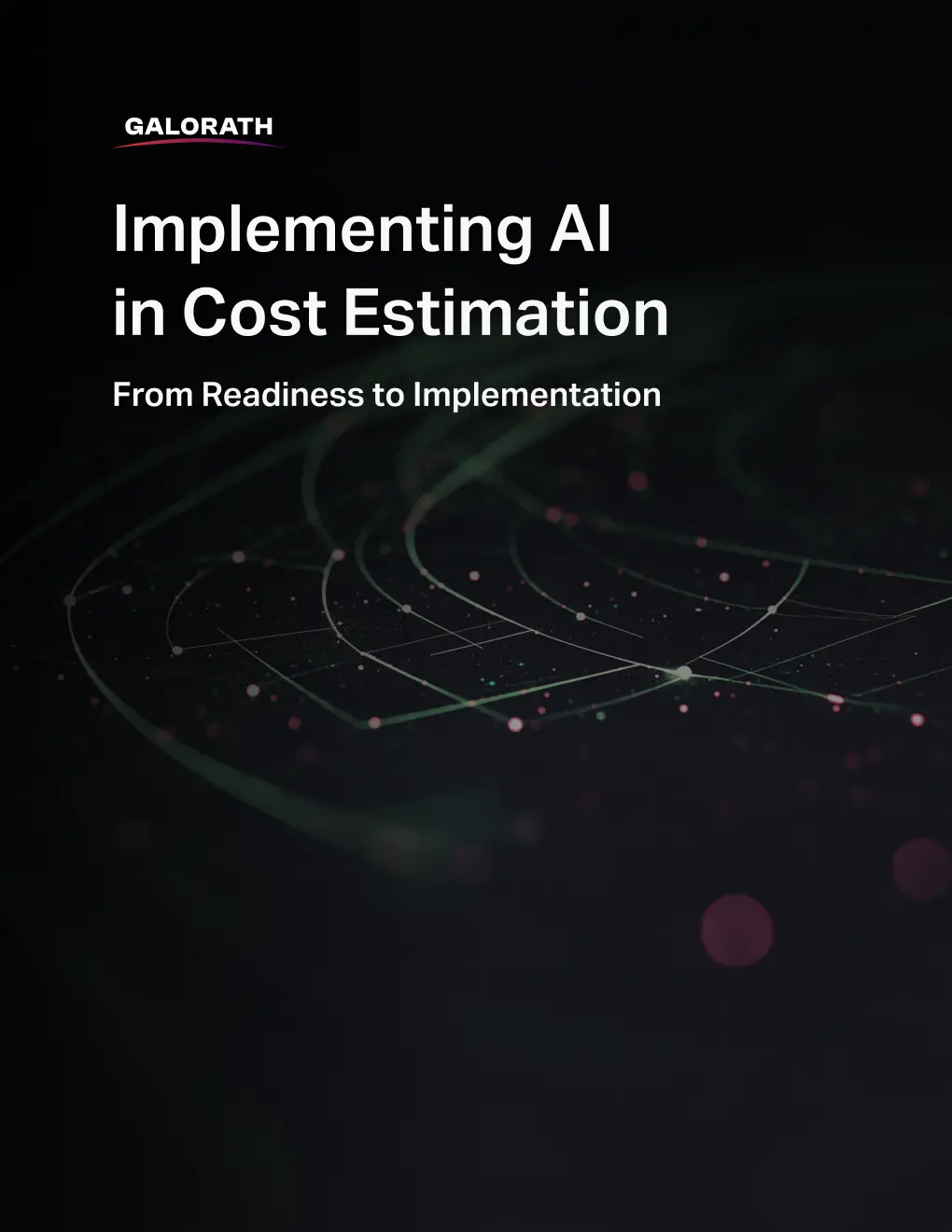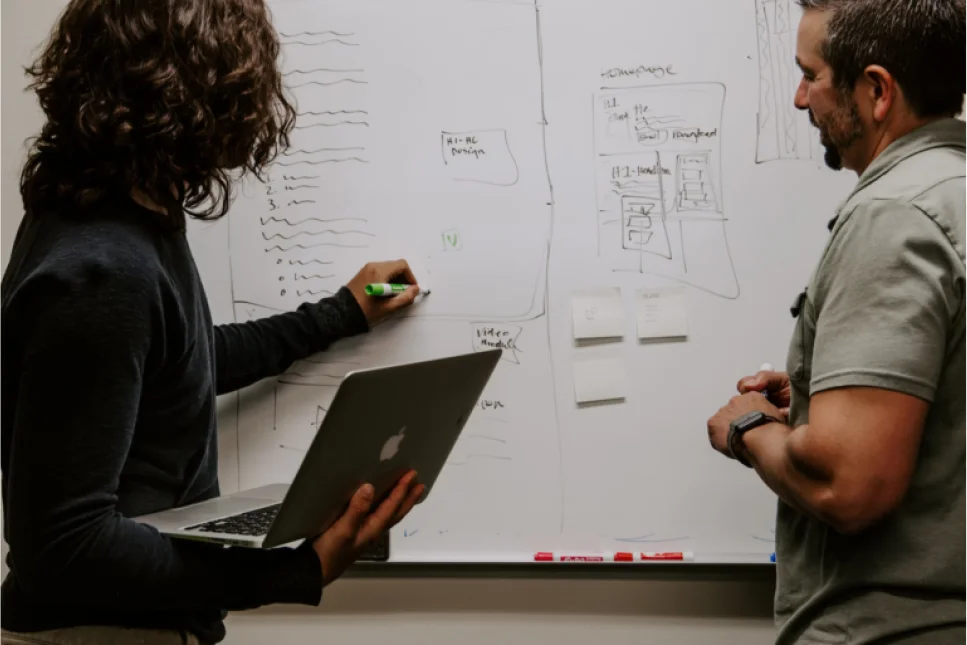Mastering Cost Risk with the CRED Model: A New Approach to Managing Uncertainty

Table of Contents
If You’re Not Modeling Risk in Real Time, You’re Only Guessing
Supply chains, labor markets, and regulatory conditions are shifting with little warning. For project-driven organizations, volatility makes traditional planning methods hard to defend. Many teams still rely on static estimates built on assumptions that were true at kickoff but no longer apply. These outdated models create blind spots that erode confidence, waste resources, and increase exposure. If organizations want to stay ahead of risk, they need systems and processes that update when the world does.
A False Sense of Certainty
On paper, many project plans appear stable. The budget balances. The delivery schedule aligns with staffing. The scope is clearly defined. But in practice, those plans are often built on assumptions that are out of date within weeks. A price change in raw materials. A regulatory shift in a target market. A resource pulled into another priority. These are not rare exceptions. They are ongoing conditions that affect nearly every sector.
Despite this, many organizations still produce one-time models at the outset of a program and treat them as fixed guides. That creates a false sense of certainty. The plan looks complete, but as variables shift and new data emerges, there is no built-in mechanism to adjust. Teams make decisions based on outdated inputs and miss opportunities to course-correct before the cost becomes visible.
Static planning processes may check compliance boxes, but they rarely reflect the realities of execution. That mismatch creates friction. Finance and delivery teams operate on different timelines. Executive expectations often drift from operational progress. What gets promised at kickoff no longer matches what can actually be delivered.
Why Planning Gaps Keep Growing
Most leaders are aware of risk, but they are limited by what they can see and how quickly they can act. Risk exposure tends to build in areas where communication is slow or cross-functional coordination is weak. For example, if procurement cost shifts are not reflected in financial models, or if schedule pressure in engineering is not shared with staffing managers, those early cracks widen into late-stage crises.
These problems are often compounded by fragmented systems. When different teams use different tools, or when project data lives in spreadsheets and emails instead of shared platforms, it becomes difficult to maintain an accurate view of what’s changing and why. According to Galorath’s 2025 Industry Report on Cost, Schedule, and Risk, 53% of professionals cited inaccessible or unreliable data as the top barrier to timely planning.
That finding reflects what many already know: the issue is not the lack of information. It is the delay in turning that information into action.
The Cost of Staying Static
When change is inevitable but models remain frozen, every small shift becomes a surprise. A delivery is missed because no one updated the timeline to reflect a supplier delay. A hiring freeze disrupts staffing assumptions, but the schedule hasn’t been adjusted. Leadership believes everything is on track until a major milestone is missed and confidence collapses.
These breakdowns do more than blow up a timeline. They affect how teams work together. When plans become disconnected from execution, trust erodes. People stop relying on the system and begin working around it. That leads to further fragmentation, more manual intervention, and even slower responses.
A plan that does not adapt becomes a risk in itself. It limits decision-making, delays issue escalation, and hides early warning signs behind out-of-date dashboards.
What Real-Time Modeling Looks Like
Real-time modeling does not require fully automated forecasting or artificial intelligence embedded in every workflow. It starts with updating core assumptions as inputs change. This might include adjusting cost projections when supplier quotes increase, modifying staffing allocations based on actual availability, or rerunning delivery timelines when a dependency slips.
Organizations that model risk continuously tend to do a few things differently:
- They structure their data so cost, schedule, and resource inputs flow from trusted sources, not spreadsheets
- They validate assumptions regularly and treat modeling as an ongoing process, not a one-time task
- They use scenario planning to understand not just what is likely to happen, but what to do if it does
The Galorath report also benchmarks planning practices across industries. The report found that organizations using real-time modeling are 2.5 times more likely to stay within budget than those relying on static estimates. These organizations are not immune to disruption. They are better equipped to adjust early and protect performance as conditions change.
What Makes This Shift Difficult
Many organizations struggle to move toward real-time modeling not because they lack interest, but because the supporting structure is missing. Common blockers include:
- Project data that is scattered across functions and not normalized
- Planning cycles that are too long or rigid to accommodate midstream updates
- Lack of ownership over cross-functional risk inputs
- A belief that complexity makes real-time modeling impractical
In truth, most organizations do not need to model everything at once. A targeted approach, starting with high-impact projects or programs that face frequent change, can build confidence and produce measurable results.
Getting Started with Real-Time Risk Modeling
C-suite leaders can support this transition by asking pointed questions:
- Are our estimates based on current conditions or outdated assumptions?
- Can we model what happens if a key cost increases or a delivery slips by a month?
- How long does it take for new information to show up in our forecasts?
If the answers suggest delays or blind spots, the next step is not overhauling the system. It is identifying where updated inputs would have changed a decision. From there, teams can begin improving model refresh rates, connecting critical data sources, and embedding checkpoints that support continuous adjustment.
Pilot programs are a strong entry point. Choose a project with high visibility or high volatility. Apply more frequent updates and compare the forecast accuracy and delivery consistency against other initiatives. Track how early insights reduce firefighting and help build executive trust.
Final Thought
Uncertainty is not going away. But planning tools and processes that treat volatility as an exception instead of the norm are becoming harder to justify. When plans remain static, decisions drift out of alignment and surprises multiply. When risk is modeled in real time, teams can shift from reacting late to responding early.
Real-time modeling is not about predicting the future with precision. It is about making better decisions with the information available now and being ready when that information changes.
To see how other organizations are adapting, Galorath’s 2025 Industry Report on Cost, Schedule, and Risk is accompanied by a series of industry-specific reports that explore real-time risk modeling in sectors such as manufacturing, software, aerospace, and government programs.
10 Step Estimation Process Sample Checklist
View our 10 Step Estimating Process Checklist. This checklist should be tuned to the individual company’s needs and suggestions.
Estimating Total Cost of Ownership (TCO)
Find out how you can use Total Cost of Ownership (TCO) model to create an estimate which includes all the costs generated over the useful life of a given application.
Should Cost Analysis
Learn how Should-Cost Analysis can identify savings opportunities and drive cost efficiency in procurement and manufacturing processes.
ROM Estimate: The First Step Towards a Detailed Project Plan
Find out what ROM (rough order of magnitude) estimate is and why is it a crucial element of every project planning cycle.
Software Maintenance Cost
Find out why accurate estimation of software maintenance costs is critical to proper project management, and how it can make up to roughly 75% of the TCO.
